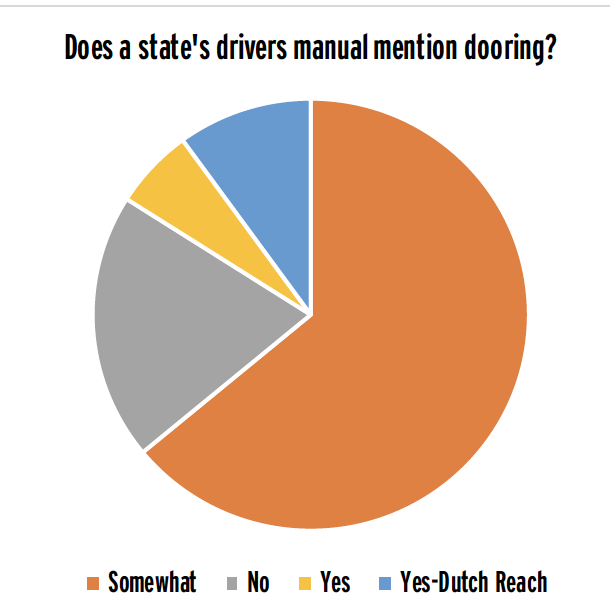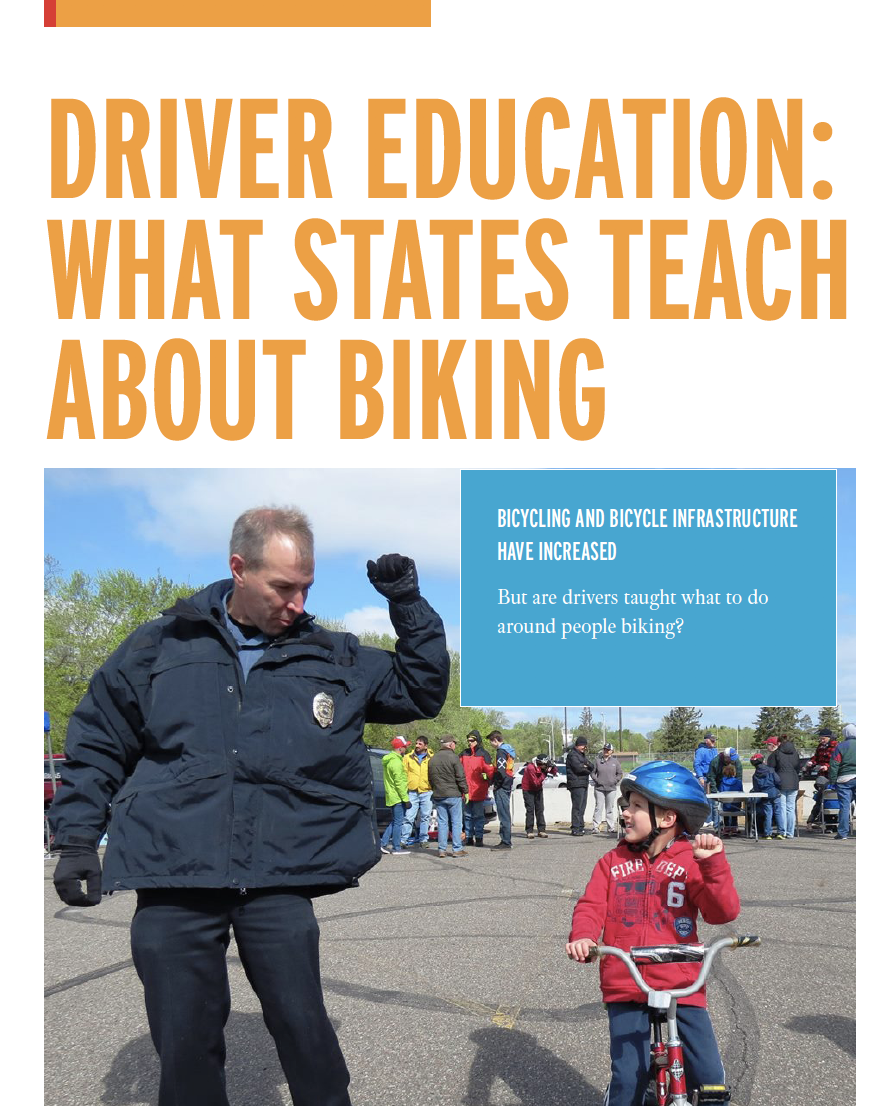DISCOVER YOUR LOCAL BICYCLING COMMUNITY
Find local advocacy groups, bike shops, instructors, clubs, classes and more!
What do states teach drivers about biking? Not much
For decades, educating people about biking has been a core element of the League’s work. This has primarily focused on teaching people how to bike more safely by imparting skills such as how to approach intersections, how to make quick stops, and how to make sure your bike is safe to ride.
More recently, the League launched a Bicycle Friendly Driver curriculum to educate people about driving safely around people biking. The Bicycle Friendly Driver curriculum seeks to expand our work to reach drivers, who all too often express confusion about why bicyclists behave the way they do.
Driver education in the United States is generally underfunded and based on preparing people for a one-time test at the age of 16 or 18, and which may never be revisited. As laws change, as streets are redesigned, as vehicles gain new technologies, most of the drivers on our roadways will rely on education they received as a teenager.

Most drivers in the United States are over 40 years old. In 1996, when a 40 year old was eligible to take their driver’s test, only one state had a 3-foot passing law, the federal government spent less than a fifth of what it spends today on biking and walking, cars were far more popular than trucks, and separated bike lanes were practically non-existent.
To better understand what drivers are formally taught about bicycling, last year I worked with Brendan Bengston, our Policy Fellow and a Junior at Lees-McRae College, where he races as part of their cycling team and went to USA Cycling Collegiate MTB Nationals.
We reached out to every state to learn about their driver manuals, driver education curriculums, and driver licensing exams. What we found is that many states do not teach drivers about common safety issues faced by people biking.
Our research found that in one-fifth of states, drivers may never receive training on how to drive alongside bicycling infrastructure or how to drive safely around a bicyclist:
- Basic roadway markings related to bicycling, such as bike lanes, were not discussed in 24% of state driver manuals.
- Concepts such as “dooring,” the danger of hitting a person biking when you open a car door, were minimally addressed in a way that may not include the danger to a bicyclist in around 80% of states.
- Newer concepts, such as education on crash warning systems, were missing in 90% of curriculums according to our survey results, even though they are included in national standards.
States can do much more to educate drivers and should take steps to modernize driver education. Cars and trucks, roadway designs, and traffic laws are changing rapidly as vehicle automation and urban mobility technologies are adopted. Currently, more people are biking and walking, a trend we hope continues long into the future.
The League recommends states educate drivers on biking and walking and take three actions:
- Update their State Driver Manuals – this is the easiest thing to do, but currently almost a quarter of states do not even discuss bike lanes.
- Make changes to education through legislative or executive action – states can require instruction on specific topics, such as safe driving in the presence of bicyclists.
- Provide transportation education, not just driver education – people are becoming consumers of multiple modes of transportation and need the skills to be safe no matter the mode they use.
» Click here to download the entire report, including how we did the research
